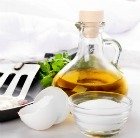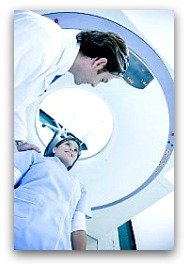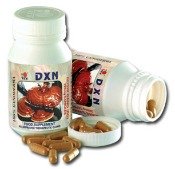Inflammatory Breast Cancer Treatment
You have been diagnosed. Now you need to know what types of inflammatory breast cancer treatment are available. Your prognosis and survival depend on the treatment you will undergo. Symptoms signifying inflammatory breast disease also play a big part on the treatment your doctor will recommend.
Inflammatory breast disease is treated differently from other types of breast tumor. Bear in mind that it is very aggressive.
Unfortunately, it is often diagnosed when symptoms are already really bad and the disease has spread. Thus, you need treatment right away or as soon as possible.
The initial inflammatory breast cancer treatment your doctor will prescribe is aggressive chemotherapy. It is a systemic treatment as it affects your whole body.
It is followed by 2 local treatments which are targeted at the breast such as surgery and radiation.
Your Available Options for IBC
1. Chemotherapy
Your doctor will recommend chemo as your immediate option and is prescribed before any other treatment to shrink and to destroy cancerous cells that have moved to other organs in your body.
It is a combination of 2 or more chemo drugs, either in pill or injectable form. The medicines are given before surgery. This is known as neoadjuvant therapy.
Chemo drugs such as Herceptin may also be given again after surgery and radiation for a minimum of 4 months and maximum of 6 months to make sure the disease won't be coming back.

It's also advisable to use olive oil in your meals daily during chemo treatment. One of the health benefits of olive oil is it helps Herceptin to be more effective in killing cancerous cells. It is also loaded with anti-inflammatory goodness.
2. Surgery
This is done after chemo treatment to remove the tumor. It may be modified radical mastectomy alone, or mastectomy with lymph node surgery, depending on how effective chemotherapy is in shrinking the tumor and in arresting the spread of cancerous cells.
A lymph node surgery is required so that the cancerous cells can be tested if they contain an unusual amount of HER2 protein or estrogen receptors. This is important because it determines the next type of treatment your doctor will prescribe.
3. Radiation

This is an additional treatment after chemo and surgery for the inflammatory types of tumor. Radiation is aimed at your breasts and/or your chest wall to kill any left over cancerous cells.
What can you do while undergoing radiation?
Try to eat a lot of vegetables and other anti-inflammatory foods. Cruciferous and green leafy vegetables such as cauliflower and kale are especially helpful in protecting your healthy cells from the harmful effects of radiation. Onset of a secondary tumor is one of the negative side effects of this type of treatment.
4. Hormonal therapy
This is an inflammatory breast cancer treatment that is prescribed if your cancerous cells are found to contain estrogen receptors. If they do, you will be given tamoxifen or aromatase inhibitor to stop your body's estrogen from feeding the disease.
Your diet is an important factor in your treatment. Try to eat anti-inflammatory foods such as berries as much as you can. Make sure that the food you consume is organically grown or produced. Organic foods are better because they are free from hormone residues, which come from hormones used to raise livestock the conventional way. Hormone residues in your food can aggravate inflammatory breast disease.
5. Targeted or biological treatment
This is prescribed -- with the use of trastuzumab -- if the cancerous cells are found to contain a high amount of HER2 protein. About 60% of women diagnosed with the inflammatory type of tumor have cancerous cells that are HER2 positive. This type of treatment can be prescribed with or after chemotherapy or after surgery for a year.
6. Supportive care
This kind of treatment aims to improve your quality of life by easing the side effects and the stress caused by the disease itself and the treatment as well. An example of supportive care is guided meditation. Even listening to meditation music helps a lot in managing chronic stress, which is a significant risk factor for the inflammatory type of tumor.
Inflammatory Breast Cancer Prognosis and Survival: What to Expect
Prognosis for inflammatory breast disease patients is not as good as non-inflammatory BC patients. The 5 year survival rate is much lower (only 25 - 50%) because of the nature of the disease. However, always remember that you and your cancer are unique. It depends on how your body reacts to the type of inflammatory breast cancer treatment you and your doctor will agree on.
Related Pages You Might Like:
Inflammatory Breast Cancer Symptoms | Breast Cancer Treatment Options | Major Breast Cancer Types: Ductal and Lobular Carcinomas | What Causes Tumors in the Breasts | What Signs of Breast Cancer to be Aware of | Breast Cancer Survivor Stories | Breast Cancer Prevention
Cancer Prevention Home > Breast Cancer Facts >Types of IBC Treatment
Images Copyright (c) 123RF Stock Photo



